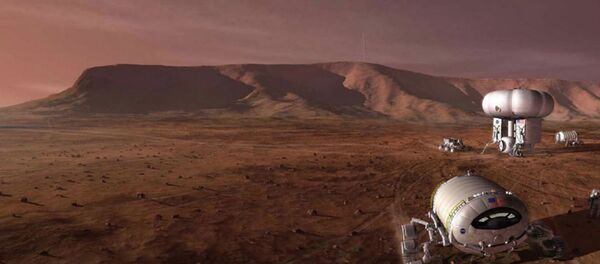Two prominent astrobiologists working on NASA’s Planetary Protection Subcommittee stressed that there is an urgent need to develop a strategy to insure that bacteria doesn’t travel from Earth to the cosmos.
For Penelope Boston, co-founder of the National Cave and Karst Research Institute in New Mexico, the problem is a familiar one. She works with organisms which live in isolated caves on Earth, and there is a similar struggle to insure that those samples don’t interact with microbes from outside of the cave.
“We need to make that overlap much bigger,” Boston said during the recent Astrobiology Science Conference, according to Space.com. “We have to learn to combine these, and we have to do that very soon.”
NASA’s Viking 1 became the first probe to successfully land on Mars on this day in 1976. #OTD #TodayInHistory @NASA pic.twitter.com/iqoLI4SpI3
— Timeline (@Timeline_Now) July 20, 2015
Modern missions are even more susceptible to transporting bacteria than earlier Mars expeditions. The latest spacecraft contain complex, sensitive equipment which cannot be sterilized as thoroughly.
“Things have changed,” Boston said at the conference. “Now we have materials and electronics not meant to be cleaned in the way we need for planetary protection.”
Traditionally, a spacecraft is cleaned with the application of extremely high temperatures which destroy any Earth-born bacteria. NASA’s 1976 Viking lander, for example, was doused extensively with thermal heat.
“People were very confident that what they were doing was sampling Mars and not sampling Earth contamination,” John Rummel, of East Carolina University,said during the conference.
“It was a smart design by people who weren't afraid of thermal testing.”
Foto: humanoidhistory: The first color image of Mars from NASA’s Viking 1 lander, July 21, 1976. (NASA) http://t.co/tYekVU8zAH
— Andreas (@sonnel8blende8) July 22, 2015
But Viking’s less-sophisticated equipment was also less susceptible to heat damage.
Meanwhile, samples collected from NASA’s Curiosity Rover, currently on Mars, showed evidence of nitrates. Discovered last spring, that lends additional credence to the theory that the Red Planet may once have been a more habitable environment.
Those samples were collected from three different sites on Mars, all of which were part of a detour from Curiosity’s main mission.






